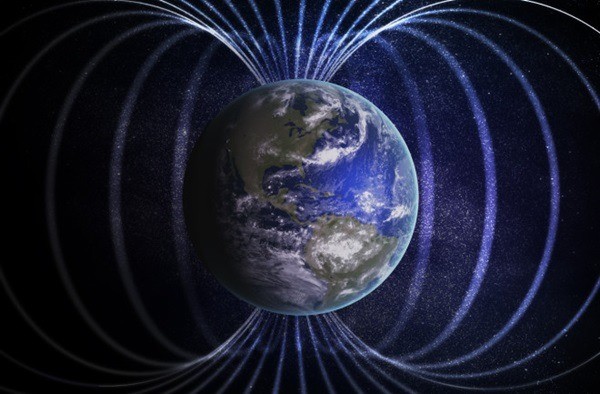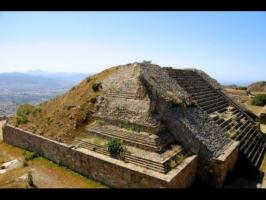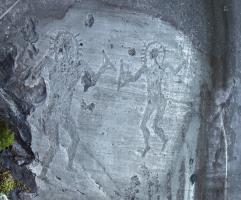Pole reversal happens several times in ancient periods
Many ancient legends seem to mention repeated changes in the direction of the earth's axis. An event that, according to certain predictions, could repeat itself in the future.

Geologists studying Earth's past have found that changes in climate have almost always coincided with changes in our planet's magnetic field. What relationship there is between the two phenomena is not clear; but there are those who put forward the hypothesis that the sudden extinction of entire living species which occurred several times in the past coincides with the sudden alterations of the magnetic field. It is proven that these alterations occurred.
These are not events that occurred in remote geological eras. According to some researchers, in relatively recent times (thousands of years) the position of the poles was very different from today. There are also those who speak of an exchange of positions between the North Pole and the South Pole.
A new sudden overturn would cause strong earthquakes along the faults of the earth's crust, and gigantic tidal waves, generated by movements of the ocean floor. A scenario would emerge of islands swallowed by the waves, coasts swept by the waves, portions of continents submerged, while part of the seabed could instead emerge into the light. A universal flood perspective.
If the Earth's axis were to tip completely, the entire planet would be shaken by hurricanes and tidal waves. There are clues that would support this theory. The large coal deposits in England indicate that those regions must once have had a tropical climate, with large forests and swamps. Large areas of North America were also similarly covered in rainforest. By contrast, Western Australia and southern Africa were buried under a blanket of ice.
A possible explanation for these anomalies was offered in the 1920s by Alfred Wegener with the theory of "continental drift", which however assumes that enormous continental masses are moved thousands of kilometers from their original positions over time. According to some, the hypothesis of a reversal of the earth's axis constitutes a simpler explanation. The problem of finding mammoths in freezing Siberia would also be solved, in an environment certainly not capable of supporting the abundant vegetation necessary for the sustenance of the enormous mammals. Before the poles shifted, Siberia had a tropical climate, and mammoths thrived there. The blanket of frost fell so quickly that it trapped entire mammoths in the ice, whose flesh has been preserved intact for tens of thousands of years. One specimen was found with undigested flowers in its stomach.
If you give a hard enough bump to the axis of a gyroscope, it can tip over completely, continuing to spin in the new equilibrium position. The Earth can be seen as an enormous gyroscope, to which the approach of some celestial body, or the combined influence of different gravitational fields, may in the past have provided a "bump" strong enough to overturn. American electrical engineer Hugh Brown hypothesized in 1967 that the Earth's axis underwent a 90-degree wobble no later than seven thousand years ago. According to Brown these oscillations would be periodic in nature; this seems completely unlikely: but it is not implausible that occasional movements have actually occurred in the past.
A geophysicist, Peter Warlow, analyzed mythical narratives for evidence for his theory. According to him, the ancient Egyptians recorded four different reversals, following which the sun appeared to change the direction of its course in the heavens. The most recent would have occurred in 700 B.C. and before that in 1500 B.C.
This last event would correspond to the date of the extinction of the Minoan civilization in Crete, according to Immanuel Velikovsky.
THE SCIENTIFIC EVIDENCE
Evidence of total polarity reversals comes from the examination of molten rocks that have cooled over different geological periods. Every time a molten rock solidifies, it retains a very weak magnetic field, induced by the Earth's gravitational field. Lava erupted from active volcanoes, and even man-made objects, exhibit the same phenomenon. Even hearths, subjected repeatedly to heating and cooling, reveal the barely measurable magnetic field. Research has been conducted on ancient Australian Aboriginal hearths and on hearths from pre-Roman England to verify the polarity of these magnetic fields. Geologists have also found layers of lava rocks that solidified at different times in the ocean floor.
By "reading" all these magnetic fields, it was discovered that the Earth's magnetic field has undergone no fewer than 20 polarity reversals in the past. The last one lasted at least 2000 years.
Furthermore, even in short periods of recent history, the magnetic poles have shown a certain tendency to "wander". In the early 17th century, the compass needle pointed approximately 11 degrees east of the geographic north pole. In 1643 the deviation was four degrees east, and in 1650 for a short time the magnetic and geographic poles coincided.






















